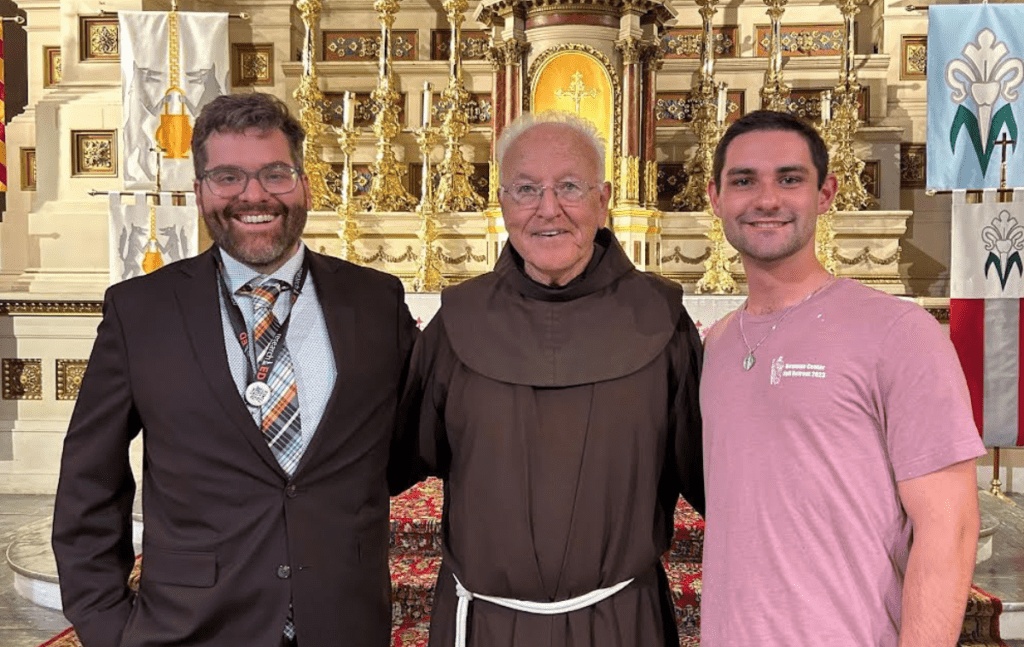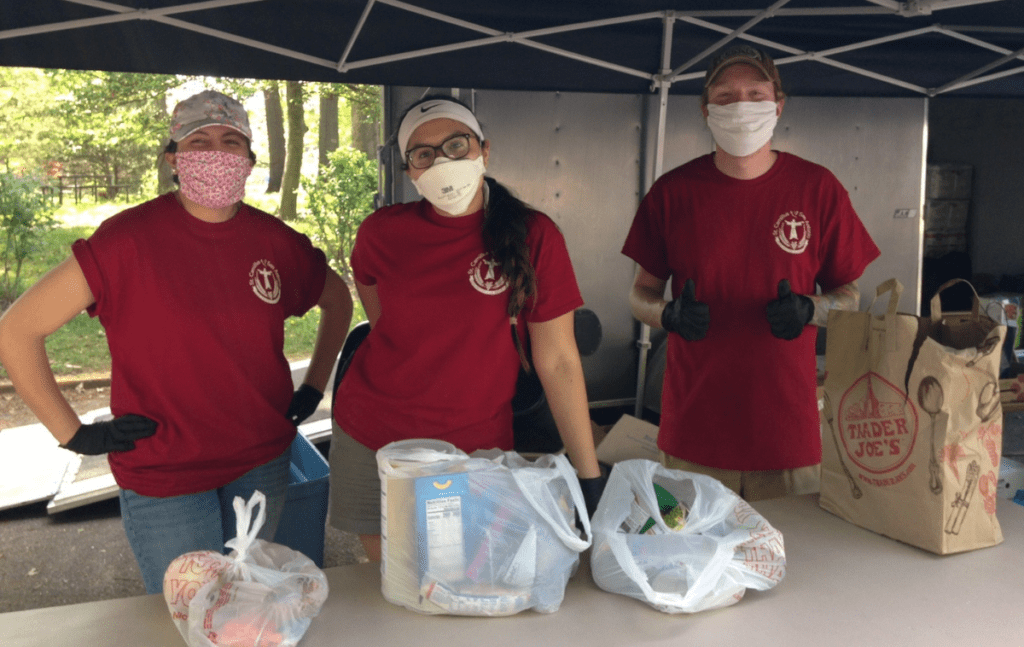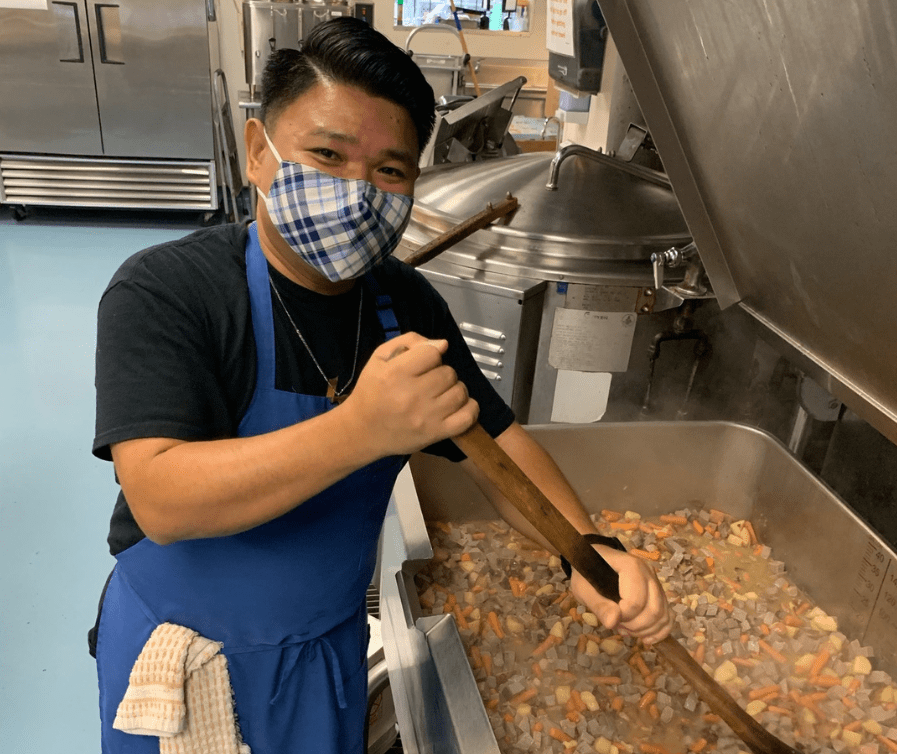
Young adulthood is a time for many to discover their gifts and seek God’s will for them. Franciscan Volunteer Ministry takes people out of their comfort zone, giving them the chance to engage in service and grow spiritually within a supportive community.
Since 1987, over 240 Franciscan Volunteer Ministers have served disadvantaged communities and promoted social justice through various ministries. FVM currently runs a service site at St. Francis Inn in Philadelphia’s Kensington neighborhood, providing food and social services.
Emma Edwards, FVM associate director, describes it as a “service and faith formation program.” Participants are typically young adults, age 21 to 35, who live in intentional community and minister fulltime for a year.
“Many times, they’re right out of college and thinking about what’s next for them,” Emma said. “Sometimes we get folks who are taking a break from what they’re doing to see what’s next. They are people hoping to grow, to put their hearts into something.”
“With FVM, they see the needs around them and can examine what God is calling them to and how they can use their gifts in a way that lifts up others,” she added. “It’s the practice of discernment in day-to-day life and the volunteers really accompany each other.”
FVMs pray and eat together, share resources and hold weekly meetings. Annual retreats provide reflection opportunities. Fr. Michael Duffy, OFM, serves as site supervisor at St. Francis Inn, and the Franciscan community at nearby Juniper Friary welcomes volunteers for prayer and meals.
Leo Vaccaro graduated from Gettysburg College in 2009 and spent a year with FVM, where he learned about homelessness, addiction and food insecurity at St. Francis Inn. These experiences “helped me realize the challenges people face and made me much more empathetic,” he said.
Leo’s experience affirmed his call to become a teacher. He shares his FVM experience with students at St. Joseph Prep in Philadelphia and continues to volunteer at St. Francis Inn, where he served on the board from 2014 to 2020.

Ana Mahomar spent two impactful years as a FVM at St. Camillus Parish in Silver Spring, Maryland. Originally from Honduras, Ana explored volunteering before graduate school.
She appreciated the opportunity to live with volunteers from diverse backgrounds. “I valued the chance to pray together, to learn how each of us experienced God, to have deep conversations about our lives and ministries.”
She helped at the parish food pantry, youth group, with local immigrants, elderly parishioners, prisoners, and shadowed a social worker and counselor. Ana studied counseling and psychology, and volunteers in Operation Smile’s psychology department in Honduras.
She recommends FVM to those unsure about who they are or what God is calling them to do. “You might already be that person but need support and people to pray with you and listen,” she said. “FVM offers many shoulders to lean on. It was a great blessing for me.”
Franciscan Volunteer Ministers David Izzo and Chris Casey are considering religious life — David with the Franciscan friars of the Province of Our Lady of Guadalupe and Chris with the Canons Regular of St. John Cantius. Both find ministry, prayer, and community life helpful in their discernment process.

David, a Chicago suburb native with an environmental studies degree, questioned his career path. After spending a weekend with the Franciscans and encouragement from Br. Greg Plata, OFM, the province’s national vocation director, he applied to FVM.
He is finding the experience to be helpful.
“Witnessing the impact of their ministry at St. Francis Inn and interacting with the guests on a deeper, more personal level gives me the sense that I can do this and affirms for me that God is calling me to a life of active ministry, but also community and deep prayer,” he said.
Chris, a student of Leo’s at St. Joseph Prep who attended Amherst College, felt called during Mass to work with the Franciscans in ministry to the poor after graduation.
“I never would have imagined doing a year of service or considered joining a religious order, but have really been inspired by the Franciscans,” Chris said. “They are so open, so welcoming and really let you into their lives. Their witness is powerful – that everyone deserves to be treated with dignity.”
That witness also inspired novice Br. Ricky Ferrer, OFM, who volunteered with FVM from 2021 to 2022.
“Living with the other FVM volunteers helps open your eyes to what’s going on in the world, not just your little part of it,” he said. “Because of the structure, the resources and all the support, you’re able to discern what God’s plan for you is in the wider community of humanity.”
Heather Huot learned of St. Francis Inn growing up in Philadelphia. During her senior year at Boston College, she brought a group of fellow students there to serve. “I came away from that weekend so incredibly moved,” she recalled.
After graduating, she was “supposed to be earning a teaching certificate and getting a job,” said Heather, “but that didn’t feel right, and I couldn’t figure out why.”
Her FVM service, from 2000 to 2001, was “the best decision I could have made and changed the whole trajectory of my life. My time at St. Francis Inn, ministering to others with love and mercy, grew my Franciscan heart and led me to where I am now,” said Heather, who works with Catholic Human Services for the Archdiocese of Philadelphia.
Br. Steve Patti, OFM, participated in FVM more than 30 years ago. The experience had a lasting impact on his life and ministry. “It helped me to draw close to a population that is ignored and forgotten, to see the face of Christ in people that you remember years later,” he said.
“It reminds me of St. Francis leaving the protective walls of Assisi. It can be a little scary to move outside the walls, but if you’re open to it and stay with it, it can stretch you.”
“FVM pulled me out of the world I knew into an unknown world, providing a template for what we’re called to do, not just as Franciscans, but as disciples of Christ,” he said. “When we take that step, good things happen, and it changes us.”
For more information about FVM, visit FranciscanVolunteerMinistry.org.

